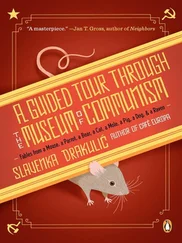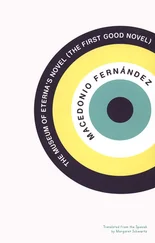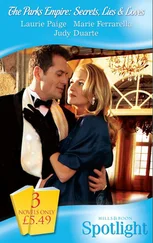“Really, I mean it. Early thirties. We forget one thing about collectivization: when those food brigades came, they didn’t just clean out pantries or take valuable goods—shearling coats, rolls of fabric, stuff like that. Displaying icons in the home was instantly incriminating. They were either destroyed on the spot or taken away, if they had any value: gold plating would be stripped off and the boards themselves burned. So, if you had any foresight at all, you’d simply take yours down and bury them in a secret spot; it had to have been a popular practice—and there you have your secret.”
“That you couldn’t tell anyone about.”
“God help you, no! Not a word. It’s not that far-fetched: our mothers must have spied our grandmothers secreting icons into the ground, and imitated them when they played, as all children do. With time, our generation inherited only the seemingly pointless manipulations with found shards of glass, a fading echo, a sound without a message. And, by the time we had kids, even that was gone, so it’s done, forgotten!”
“Grandma told me,” the reporter begins thoughtfully, “that they buried Great-Grandfather’s entire library then, a stash of pre-revolutionary books: Vynnychenko, Hrushevsky, a history of French literature in Petliura’s translation—enough that they were afraid, you know. And then they couldn’t find the spot where they put it, and their house burned down in the war… so it all must have just rotted away underground.” [She blinks when a new idea brushes past her and then leaps after it like a hound on a fresh track.] “Don’t you think this burying of treasure can be seen as a sort of a recurring motif in all of Ukrainian history? Again, look at folktales and how many tell of buried treasures, from the Kozaks, the Opryshkis, all those other rebels. And a whole stock of dark magic goes with them: how the treasures come close to the surface and burn, appearing as wandering flames above ground, and the Devil guards the treasures, so you have to know how to handle him and what to throw at the burning treasure to make it turn into coins. I don’t know if you find this stuff anywhere else in Europe, except maybe in the Balkans. What if our secrets date all the way back to those older myths? The ones about cursed treasures?”
“Nope, uh-uh,” the painter shakes her head. [She’s already considered this and rejected the idea.] “And you know why not? Precisely because secrets was a girls-only game. It was women who buried the icons—it was their job: one, because they were safer from the authorities—if they got caught, it was no big deal, like what else would you expect from a stupid broad.”
“No class consciousness,” the interviewer pipes in with the vintage Communist-speak.
“Exactly, and who took the cattle back from the kolkhoz in the early thirties? Again, mothers and wives, and that’s how they managed to keep them. Had their men tried to get their horses back, that wouldn’t have gone so well; they’d be shipped off to the Solovki the same day. It’s like when the women riot, it’s not for real. And two—and this is more important—a home’s icons have always been a kind of Di Penates, deities of the hearth, and of course, all things domestic constituted the woman’s sphere of influence—the man’s began outside the door. So when our grannies went digging to bury their icons, they weren’t intent on preserving our artistic heritage, but simply protecting the spirit of the home, as good wives and mothers have always done—‘While the icons hang, the home stands,’ as the proverb went. It was women’s work, Daryna, I’m telling you, and that’s why two generations later it turned into a girls-only game. That’s the only explanation.”
“That’s astonishing,” announces the brunette, triumphant. [Now she could really use a break to digest the new ideas, but since they’ve already had a break, albeit not of her own devising, she soldiers on.] “And what about for you, personally—is being a woman something that you feel is important to your work? Do you draw a distinction between men’s and women’s art? Do you see yourself as an heiress to a uniquely female artistic tradition? Can you name any female artists you consider your predecessors?”
“That’s a good question, Daryna, thank you. I feel that with Secrets I finally found a style that’s truly my own, and I don’t just mean the technique of mixing things into a collage, against a patchwork background—all my touched-up photographs and padding with glued-in car visors to create bulk—although this also constitutes a very feminine approach to media. I’m like the woman who makes her borsch by mixing whatever is slowly rotting in her fridge.” [The painter pauses, searching for words, and at that moment a sudden gust of wind whips her hair back, extracting her small pale face out of its shaggy gilded frame, leaving it naked and defenseless, and she looks like a serious gray-eyed boy, thoughtful beyond years—an acolyte soon to take his vows, whose entire presence is threaded with a cold, otherworldly light of estrangement, an uncanny, unsettling moment, a hush, as if someone invisible has stepped into the frame. A sudden chill ripples through the interviewer, but that could be the air, maybe a door opened and closed inside the building, or simply the first breath of the imminent autumn; it is, after all, the end of August.]
“I’m sorry,” the painter says. [She looks baffled, and attempts to smile, haplessly.] “I lost my train of thought…. Oh yes,” [Her voice gradually regains its self-possessed tenor and flows evenly, stumbling only occasionally over the most treacherous twists and shallows of thought.] “it’s not just about technique. I work with objects that have been in everyday use, or, rather, what’s left of them. The pieces of china that form a mosaic on the canvas are shards of actual dinnerware and figurines. The same goes for the car visors, and the pieces of fabric, burlap, knitting—I rarely use anything new; things that have been in use have a special feel to them, they’re warm. So, if you want to talk about my sense of a female legacy, I’m kind of inverting, mirroring something women had done since ancient times—decorating their everyday lives. Traditionally, it is the applied arts, and not studio painting, that has been the feminine domain, especially here in Ukraine, where all ornamental painting has always been done by women. That’s the tradition all our primitivists come from—Prymachenko, Sobachko-Shostak—where else if not from the world of painted stoves and sideboards? Even Aleksandra Ekster in the mid-1920s designed patterns for artisan carpet-making co-ops around Mykolaiv, until the government sent them all packing.”
“Really?” the reporter croons. “I had no idea…”
“So yes, there you have it. And I do the opposite—I work with what’s ruined, the wrecked home, so to speak—trying to build something new, but different, out of it.”
“And succeeding,” says the interviewer. [Her sudden response has an unintentional reverence that instantly erects an impenetrable glass barrier between her and the object of her admiration. The painter squints.] “ Contents of a Purse Found at the Scene of the Accident is, in my opinion, absolutely brilliant.” [The painter mumbles incomprehensibly.] “Really, I mean it; it’s a postmodern classic! Who bought it?”
“The Lausanne Hermitage.”
“Well, how nice for them—they could just go and buy themselves a Vladyslava Matusevych!” [She turns to the camera emphatically, so that no one could possibly miss this. A few sparrows blow off a table nearby, startled by the dramatic pronouncement.] “And we are too poor even to put together a national museum of contemporary art! It is a splendid piece, truly splendid.” [She slows her pace to a luxuriant purr, as if savoring the painting’s every detail in her mind again.] “And now we’ll only have the slide to appreciate.” [She looks down and reads from prepared notes.] “The painting visualizes a complete drama, composed of small fragments of evidence that usually go unnoticed. In its own way, the work is highly cinematographic, like a montage in which each cut speaks volumes, so one can spend hours reading it, frame by frame—the broken glasses, the receipts, a customs declaration, a picture of a husband and a child tucked into a notebook, a bronzer with a shattered mirror, and those horrific bloody smears on top of…”
Читать дальше












